Blog
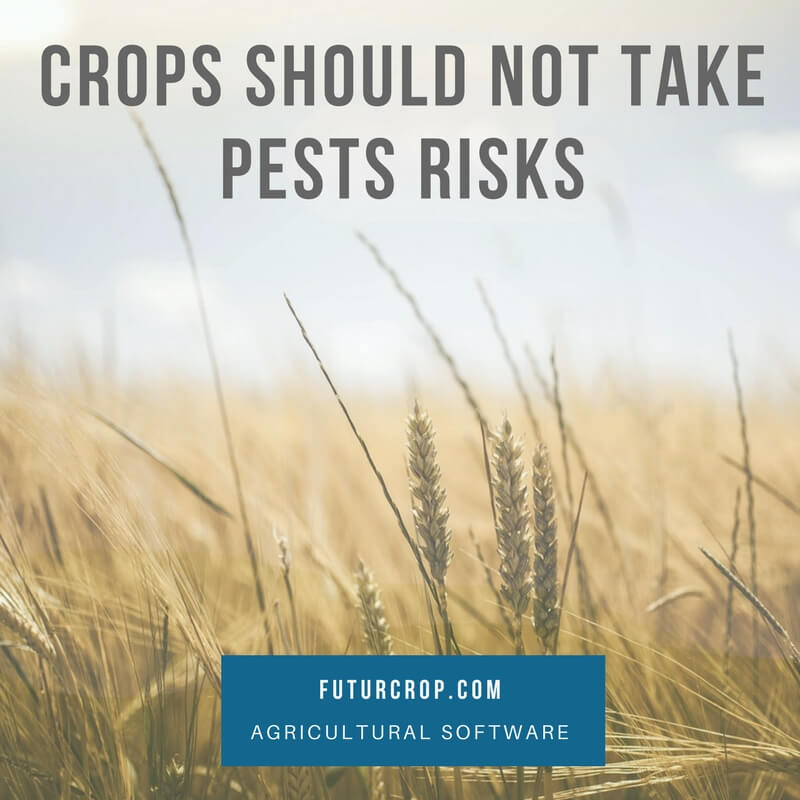
Pest Control Forecasting and Control Warning Systems
Futurcrop - 07-05-2021
FAO repeatedly states that in order to solve pest control problems in agriculture, there is a need to obtain more information, and apply more effective treatments. FORECASTING AND CONTROL WARNING SYSTEMSThus, in order to take more efficient pest efficient actions, it is required those actions to be based on well informed decisions, with all available data, obtained through a DECISION SUPPORT SYSTEM FOR PEST CONTROL, like FundamentalsThe Problem How long does it take a peach twig borer egg (Anarsia lineatella) to hatch?5 days10 days11 daysAll of the above How long the egg takes to hatch depends on temperature Farmers and technicians perform unnecessary preventive treatments because of the fear of losing their crops. However, despite the increasing use of pesticides in modern agriculture, chemical insecticides lose effectiveness because of their constant use, pests developing resistance to them. In fact, over the last 38 years, 436 new arthropods species have developed resistance to chemical insecticides. Related concepts THE DEVELOPMENT OF CERTAIN ORGANISMS IS RELATED TO TEMPERATURE PhenologyThe study of how organisms develop through stages over time. Insects biological development does not occur on a calendar-day basis (as it could be the case with warm-blooded animals, whose body temperatures rarely vary more than a few degrees), but on a unit-of-heat scale (Grade-day). So:Upper and lo...
Read more
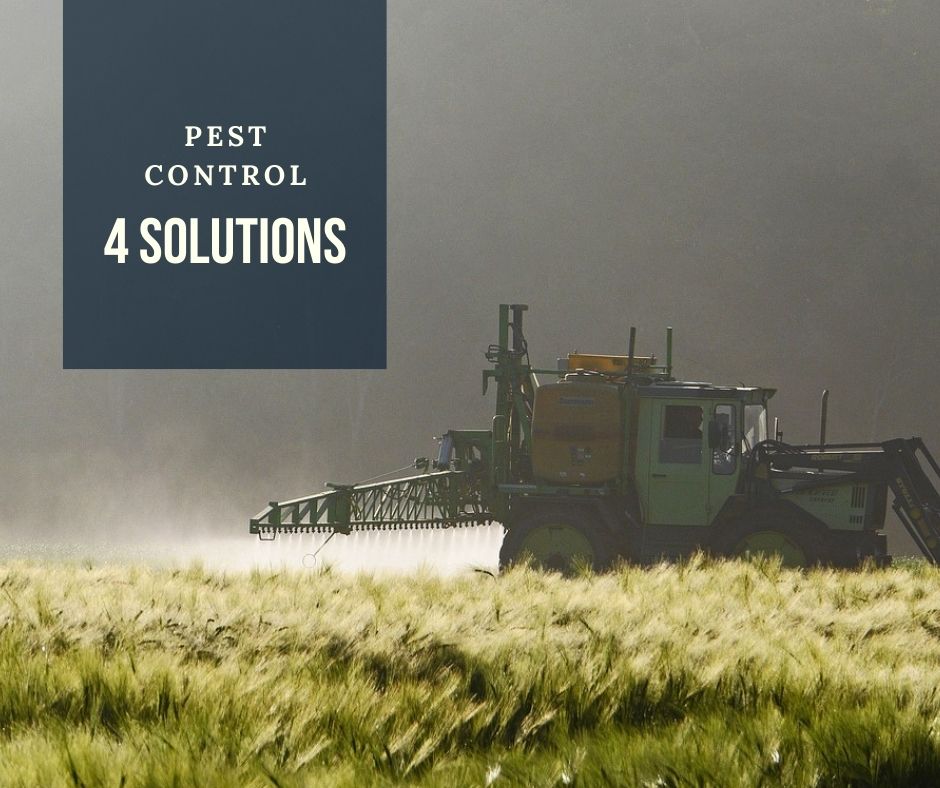
Solution to 4 common agricultural pest control problems
Futurcrop - 19-01-2021
THE 4 BIG PROBLEMS OF PEST CONTROL During pre-industrial agriculture, pests were not such a problem that they are today, because they were controlled by their biological enemies. However, today pest control is a growing problem in agriculture due to the characteristics of the prevailing agricultural production model, which encourages the establishment of large-scale, specialized monocultures, and crops are highly dependent on chemical products that kill beneficial insects, birds, etc. The current prevailing agricultural production system has made farming systems more vulnerable. The growing problem of pest control is consequence of: FIRST: Bigger cultivation areas, so pests have an endless reservoir of food, and they are also more difficult to locate and control.PROPOSED SOLUTION: As the cultivation areas need to be large to obtain the maximum economic profitability, then it is convenient create islands to plant shrubs and native plants that act as biological reservoirs for parasitoids and predators of pests, or use on that purpose the edges of the field SECOND: The massive use of herbicides, which led to the elimination of plants that served as refuge and food for beneficial insects.PROPOSED SOLUTION: The role of wild vegetation should be reconsidered. If plants do not compete with our crops and can provide a reservoir of natural enemies of pests, plants should not be considered weeds. Nor should we rule out the possibility of removing weeds not by chemic...
Read more
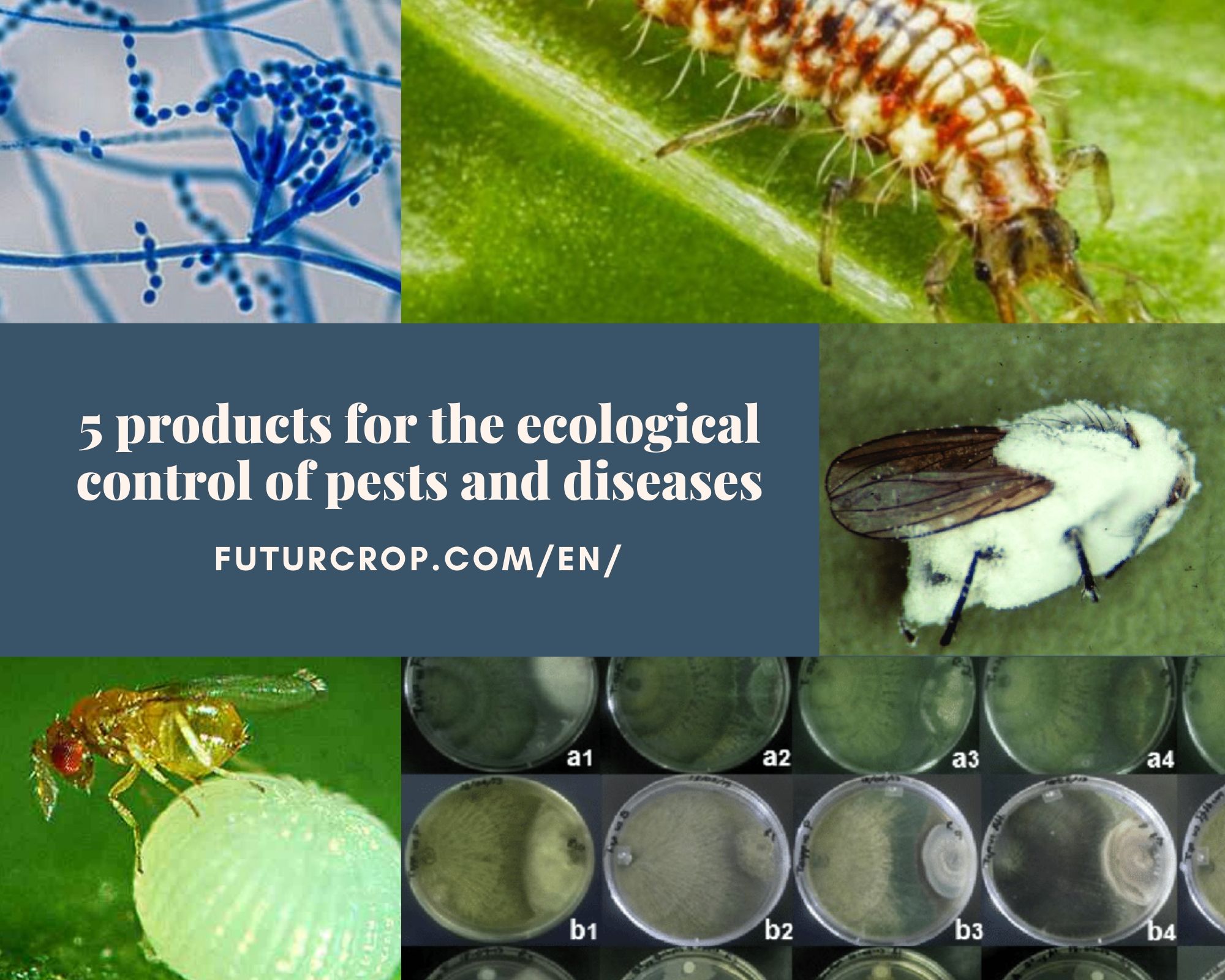
5 products for the ecological control of pests and diseases
Futurcrop - 18-06-2020
Other products than chemical insecticides are nowadays available for pest controlling, basically using entomopathogenic fungi and predatory or parasitoid insects. Companies sell organisms that have always been present in the agriculture, but intensive farming methods have altered their natural action. 5 types of products stand out for the ecological control of pests and diseases, as they are the most widely used. Three of them are fungi (Trichoderma, Beauveria, Paecilomyces) and the other two are insects, predators, and pest parasitoids (Crisopera and Trichogramma). Trichoderma Fungi that act as competitive hyperparasites when they interact with other fungi of the genera Phytophthora, Rhizoctonia, Scierotiums, Pythium and Fusarium. Thricoderma are used in the composition of many anti fungal products because they are easily isolated and cultivated, and grow quickly on a large number of substrates. They are used to control certain phytopathogenic fungi in the soil and fungal diseases such as wilt, root and / or neck rot of the plant, Mildew, White Speck and Botrytis. Often, to have more commercial value, Trichoderma fungus are combined with other beneficial microorganisms such as mycorrhizae, nitrogen-fixed bacteria (such as Azotobacter spp., Azospirillum spp.), phosphorus or potassium solubilizing bacteria, etc. A great advantage of Trichoderma is its simple homemade production. Generally, leguminous crops are used, due to their ease...
Read more
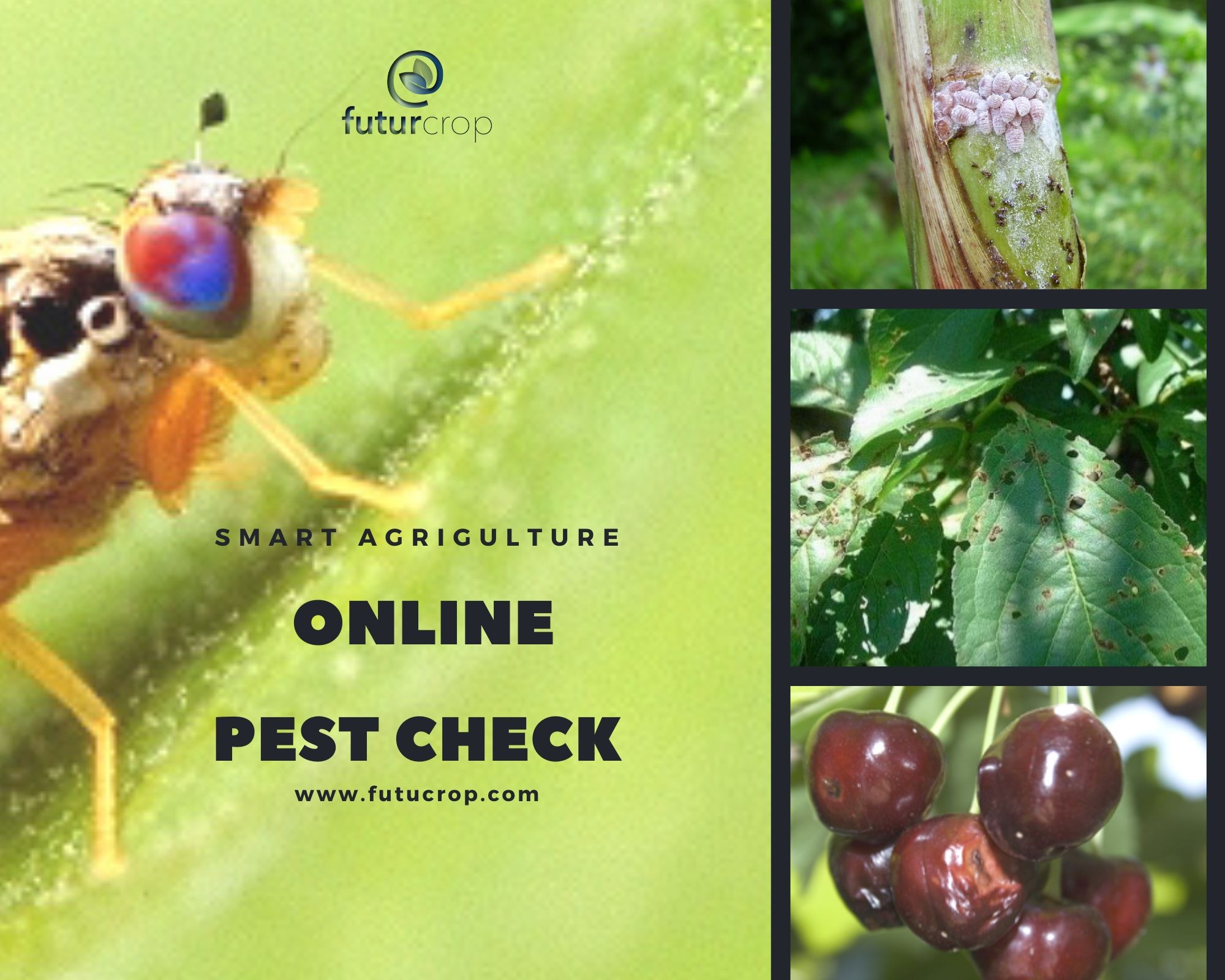
Online pest identification tool, by type of crop damage.
Futurcrop - 11-05-2020
The early identification of the pest makes its control easier and more effective. Inappropriate control actions cost time and money, and can create unnecessary risks for people or the environment. FuturCrop, software that facilitates efficient monitoring and treatment of 179 pests, has developed a free pest identification online tool. https://futurcrop.com//en/home/plagueDamageCalculator Related postsReal time pest and vegetable diseases prediction modelsIdentification of lepidopteran larvae of agricultural importanceFuturCrop improves the monitoring of pests and the effectiveness of treatments
Read more
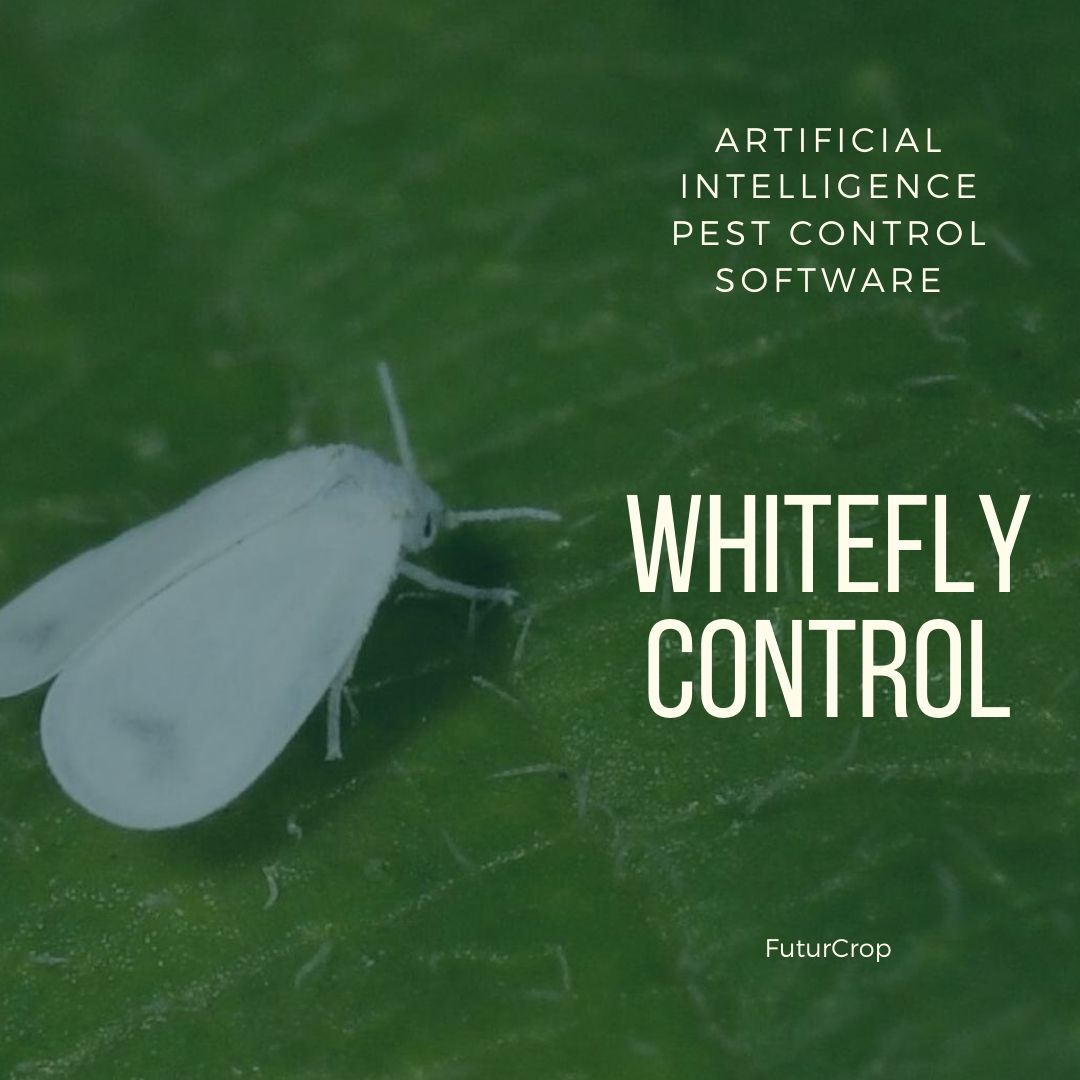
Measures to control whiteflies
Admin Futurcrop - 03-02-2020
Insect pests cannot regulate their own temperature and depend on the outside temperature to start or end their biological development. This feature allows calculations to determine the appropriate time to perform control treatments. The greenhouse whitefly (Trialeurodes vaporariorum) develops within the temperature range of 16 ° and 27 ° C. Below 16º C and above 27º C the size of the whitefly population decreases, due to high mortality and limited reproduction. Temperature influences pests in different ways, depending on their state of development and even on sex. Females live twice as much as males at temperatures above 15º C. Trialeurodes vaporariorum completes its development from egg to adult at all temperatures between 15 ° 28 ° C, but not in the range of 10 ° and 32 ° C Experiments verified that the lower temperature thresholds for the immature stages are 9.45ºC (egg), 6.26ºC (nymph) and 10.64ºC (pupa). For the three immature stages, the lowest mortality occurs at 25ºC (1%) and the highest at 28ºC (30.23%). And 93-96% survival of all immature stages occurs in the optimum temperature range of 20 ° and 25 ° C. We know that with a constant temperature of 15º C, the total development of the whitefly is 46.71 days. If agriculture were to develop under constant temperature conditions, we could easily carry out programmed effective insecticide applications. But with a constant temperature o...
Read more
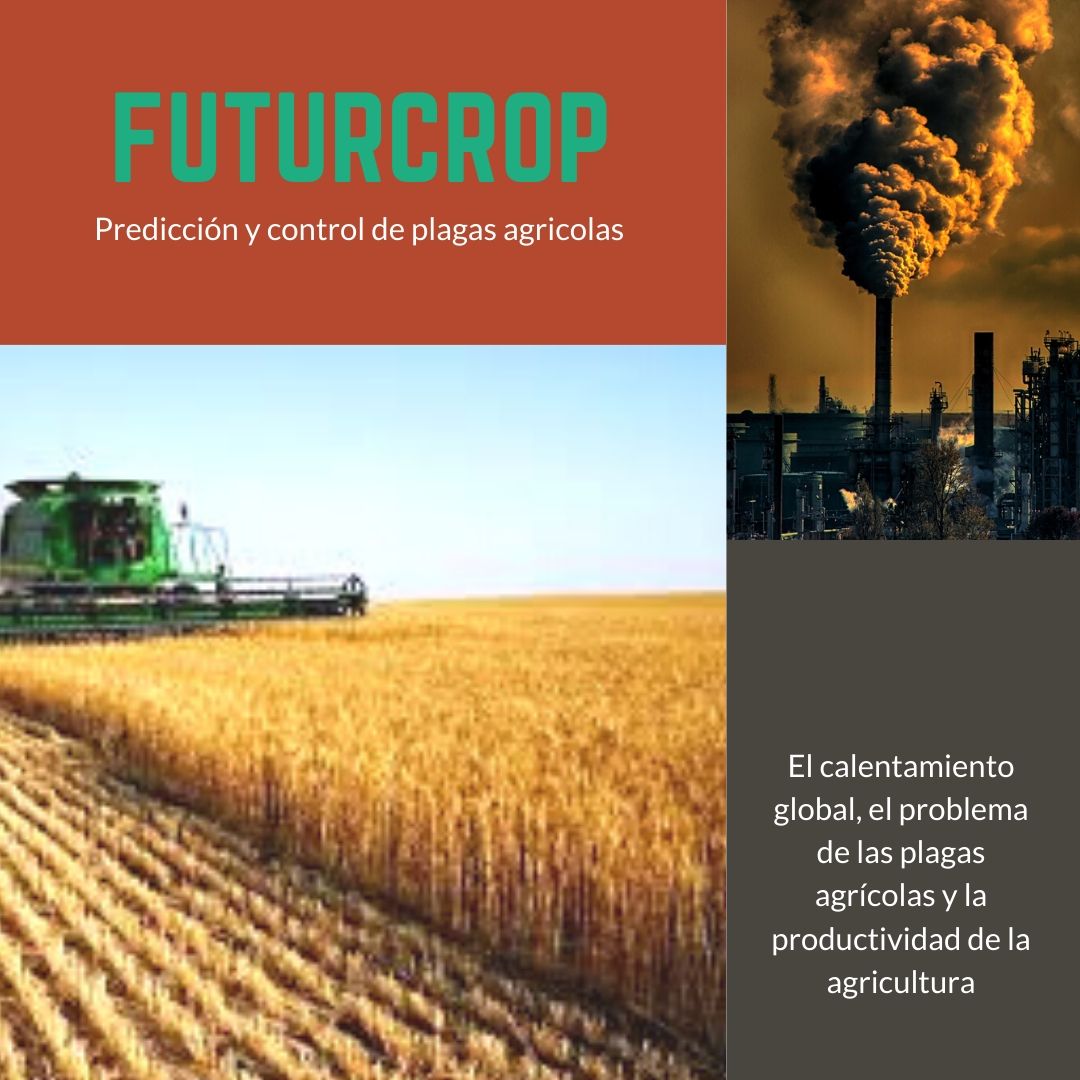
Global warming, agricultural pests and the productivity of agriculture
Futurcrop - 29-01-2020
It is estimated that agriculture must necessarily increase its productive by 60%, to feed an estimated population of 9,100 million people in 2050. Although world crop yield would continue to grow, growth rate will be slower than in the past, approximately half (0.8%) of its historical growth rate for developing countries. In addition, FAO estimates a yearly yield crop global loss from 20% to 40% due to pests and diseases. Therefore, reducing food losses caused by crop pests and diseases is of great importance to meet the future food needs of the world.
But the global warming will mean an increase in crop pest problems, an increase in crop losses and a decrease in their quality and yield. If CO2 emissions are not reduced, the predictions for 2050 mean a global increase in temperatures from 2 ° to 3 ° C.
Insect pests are poikilothermic organisms, that is, they cannot regulate their own temperature internally, depending on the temperature at which they are exposed in the environment to start or end the biological development of their life cycle. The global increase in temperatures means that a greater abundance of pests will occur and that the difficulty in controlling pests in agricultural systems will increase. On the one hand, new geographical areas will be affected by new pests, from the expansion of the range of native pests or invasion by new pests. On the other hand, there will be an accelerated development of pests that will lead to more gene...
Read more

Pest control efficiency in Agriculture
Futurcrop - 04-11-2019
An efficient treatment of Anarsia lineatella it must be carried out after the hatching of the eggs, when the majority of larvae have already left, but before they pierce the buds or shoots of fruit trees, as then insecticides no longer reach the pest. Tuta absoluta larvae Spodoptera frugiperda larvae Each pest has its most vulnerable moment, when they are most sensitive to treatments. However, it is difficult to know and predict those moments. That is the main than pest control treatments, chemical or biological, are usually carried out by calendar dates or by the evidence of the damage in crops. The problem is that generally in the first case these treatments were either not necessary or have no effect. Or, in the second case, if the treatments are performed when the damage to the crop is already evident, they are usually late and the pest is already difficult to control. Consequently, the reality of current agriculture is that most of the treatments are carried out even if not necessary, or an excessive quantity of chemical insecticides are being applied. The indiscriminate and repeated use of insecticides for pest control has no effect: it means a waste of money and in most cases the problem of pests is aggravated. If a producer intends to control the pest in its first generation larvae stage of the pest, but carry out an chemical treatment too soon, it will have decreased the effectiveness of the treatment due t...
Read more
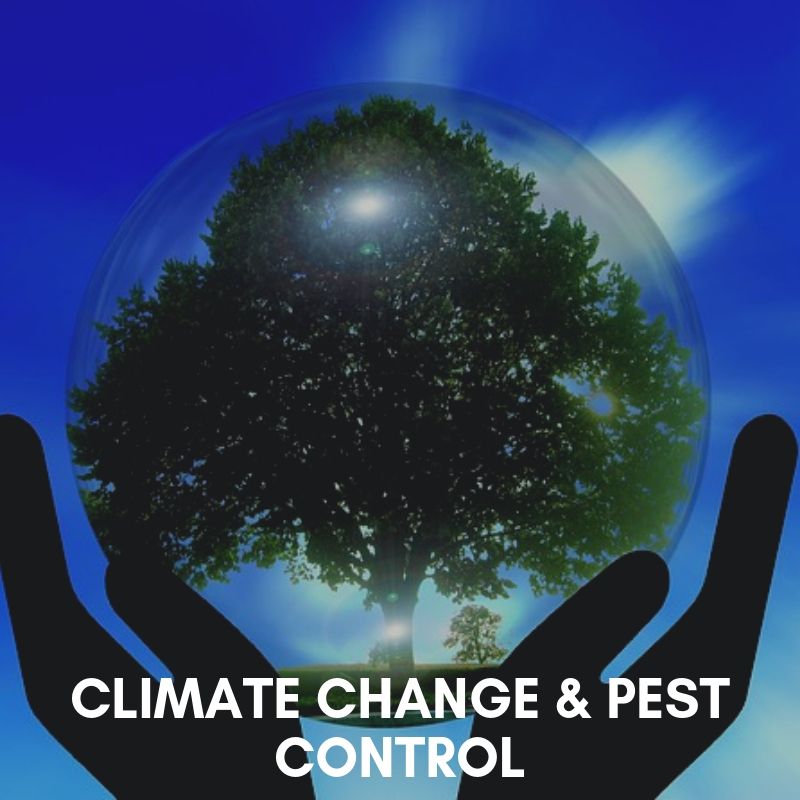
Potential effects of climate change of insect pest dynamics
Futurcrop - 12-07-2019
POTENTIAL EFFECTS OF CLIMATE CHANGE ON INSECT PEST DYNAMICS
Sikha Deka1*, Sharmistha Barthakur1 and Renu Pandey2
1National Research Centre on Plant Biotechnology, Pusa Campus, New Delhi 110012
2Division of Plant Physiology,
Indian Agricultural Research Institute, New Delhi 110012
INTRODUCTION
Climate change is the most important, and the most complex, global environmental issue to-date. Effects of green house gases and climatic changes are already evident from the rising climatic temperature, recurrent droughts, erratic rains, flooding and submergence etc. Global climate is expected to warm 1.4 to 5.8oC over the century with the maximum increase at Northern Latitude (Meehl, 2007). Such changes may have serious impacts on global crop productivity and agricultural production leading to famine and starvation. A recent study predicts that crop harvest will decline by more than 30% in Indian subcontinent by 2050 (Rao, 1999).
Climatic factors like temperature and precipitation in particular, have a very strong influence on the development, reproduction and survival of insect pests and pathogens. Researchers found that the numbers of leaf eating insects are likely to surge as a result of rising levels of CO2, at a time when crop production will have to be boosted to feed an extra three billion people living at the end of 21st century (Connor, 2008). It is predicted that some...
Read more
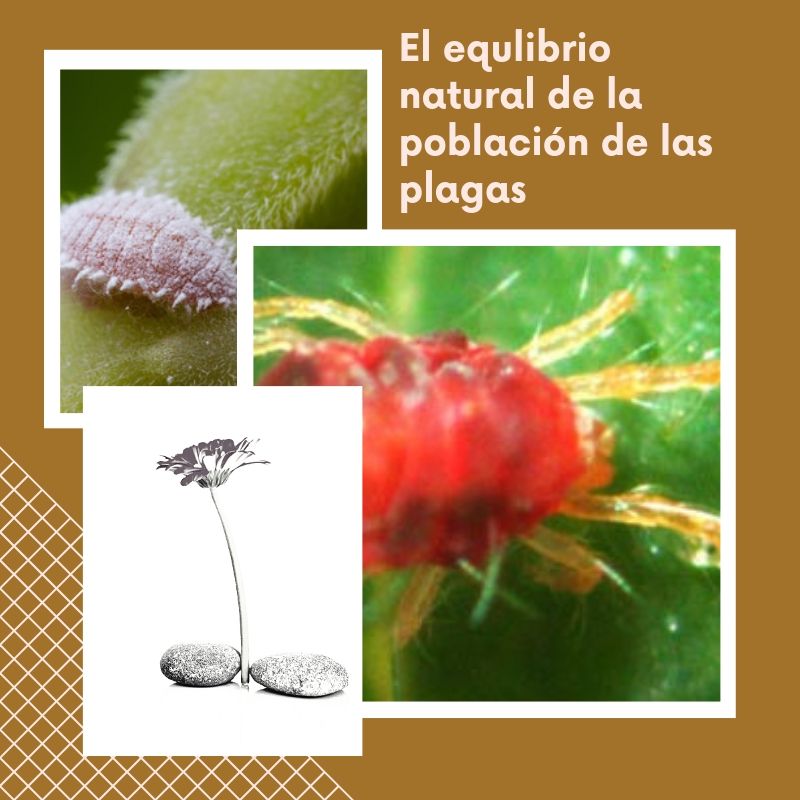
How the application of insecticides has created problems where none existed
Futurcrop - 16-05-2019
Several factors (monoculture, climate change, etc.), have influenced the uncontrolled development of pest populations in crops, but mainly the inadequate use of chemical insecticides has affected the natural balance between pests and their predators and parasitoids. General spectrum insecticides indiscriminately kill pests and their predators, both kill the pests that cause damage to crops and their natural enemies. Red spiders mites (Tetranychus urticae), now a widespread pest in crops around the world, were never a serious pest in agriculture. The populations of the red spider mites were regulated by their natural predators, mainly by the predatory mites of the phytoseid family (although also other families such as some dipterans and coleoptera). But it has been human intervention that has broken that natural balance, through the indiscriminate and systematic use of synthetic organic pesticides since the second half of the 20th century. Twenty years later, populations of mites of the family Tetranychidae, such as the spider mite, are pests that can be very destructive in the agricultural sector. The obscure mealybug (Pseudococcus viburni) usually do not constitute great damage in crops due to the control exercised over their population by their natural enemies, parasitoids and predators (the families of chrysopids, hemeropods, diptera and coccinellids). However, when the natural enemies of the insect are destroyed by the application of insecticides, the mealybug c...
Read more
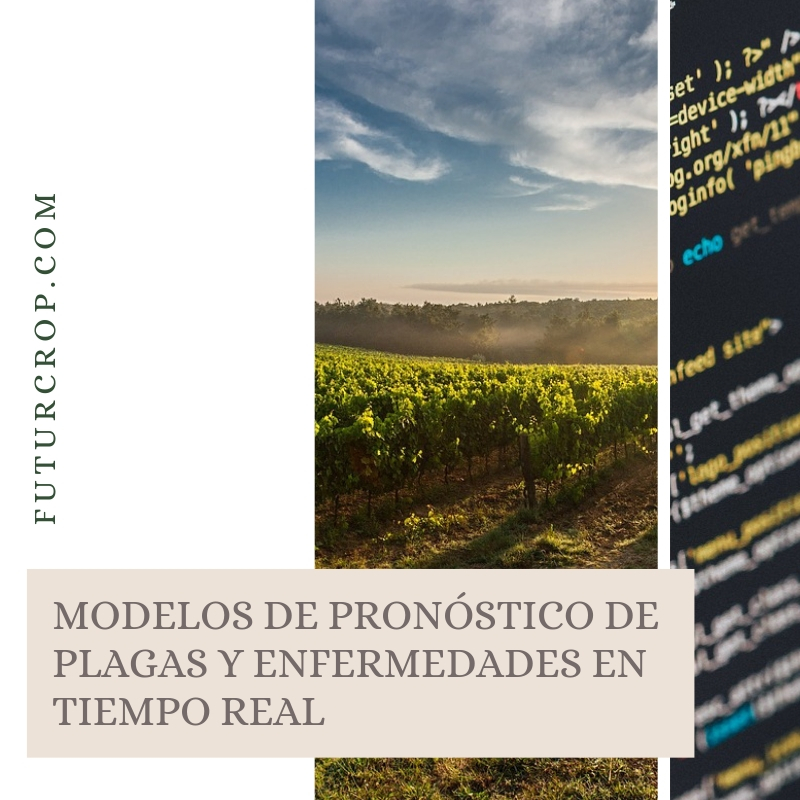
Real time pest and vegetable diseases prediction models
Futurcrop - 16-04-2019
Currently, pest management techniques have changed drastically due to the following circumstances:
Global Warming, which influence in a greater presence of pests throughout the year, in shorter biological cycles, and in the displacement of pests to areas where the climate previously prevented their development.
Transnational trade transports pests to new areas, now with temperatures where they can develop, and where they have no natural enemies to control them. These transboundary pests cause serious damage to crops because in general they are not properly identified and there is no habitual knowledge about their management and control.
The current and predominant agricultural production system, that uses chemical insecticides repeatedly, usually causes the development of pest resistance to insecticides. Chemical treatments are usually carried out without considering the stage of development of the pest, nor the conditions of the crop and in many cases without a real risk. Chemical treatments of a preventive nature are simply carried out, and according to calendar dates. Unnecessary applications imply unnecessary contamination, to the environment and to the crops themselves.
Current legislation tends to demand the sustainable use of phytosanitary products, by reducing their risks and their effects on human health and the environment. The same legislation encourages the use of integrated pest management techniques, and alternative approaches or techniques to chemi...
Read more